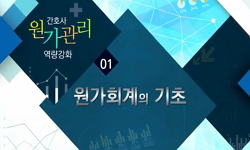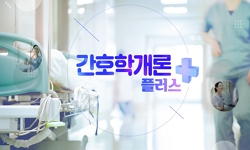본 연구는 종합병원 간호사를 대상으로 간호업무수행에 대한 다면평가로 상사평가, 동료평가 및 자가평가를 실시하여 그 차이를 비교분석함으로써 다면평가제도의 도입을 위한 필요한 기...
http://chineseinput.net/에서 pinyin(병음)방식으로 중국어를 변환할 수 있습니다.
변환된 중국어를 복사하여 사용하시면 됩니다.
- 中文 을 입력하시려면 zhongwen을 입력하시고 space를누르시면됩니다.
- 北京 을 입력하시려면 beijing을 입력하시고 space를 누르시면 됩니다.
부가정보
국문 초록 (Abstract)
연구대상자는 일 종합병원에 근무하는 수간호사 13명과 일반간호사 122명이며, 연구도구로는 병원간호사(2006)에서 개발한 간호사 인사고과도구를 수정하여 사용하였다. 구조화된 설문지를 이용하여 2007년 5월 4일부터 5월 8일까지 일반간호사 122명에 대해 수간호사, 동료간호사, 자기 자신으로부터 자료를 수집하였다.
연구의 주요 결과는 다음과 같다.
1) 업무수행평가제도 인식에서, 적절한 평가횟수로 수간호사는 년 1회가 100.0%, 일반간호사는 년 1회가 67.4%와 년 2회가 34.4%로 나타나 유의한 차이를 보였다(p<.05). 업무수행평가를 위한 적합한 평가자로는 ‘상사, 자신, 동료’가 가장 높았으며, 평가자별 참여비율에 있어서 동료평가와 자가평가의 비율은 수간호사에 비해 일반간호사가 유의하게 더 높았다(p<.05). 평가결과의 공개여부에 대해서는 공개해야 한다는 수간호사 69.2%, 일반간호사 58.8%였으며, 그이유로는 ‘능력개발에 대한 동기부여를 위해’가 각각 57.1%와 75.7%로 가장 높게 나타났다. 승진요소별 반영비율은 수간호사의 경우 업무수행평가 성적, 경력, 잠재능력, 학력 및 교육정도의 순으로 나타났으나, 일반간호사의 경우 잠재능력, 경력, 업무수행평가 성적, 학력 및 교육정도의 순이었다. 승진 시 업무수행평가 성적의 반영비율은 수간호사가 일반간호사 보다 유의하게 더 높았다(p<.01).
2) 간호사 업무수행에 대한 상사평가와 동료평가 점수는 매우 높은 정의 상관관계를 보였다(r=.729, p=.000). 또한 자가평가 점수는 상사평가 및 동료평가와 중간정도의 정 상관관계를 나타냈으며(r=.483 ; .465, p=.000).
업무수행평가의 네 영역 중 태도영역에 대한 상사평가 점수는 자가평가나 동료평가 점수보다 유의하게 더 높았다(F=6.471, p=.002),
3) 대상자의 특성에 따른 상사평가, 동료평가, 자가평가의 점수의 차이를 분석에서, 상사평가는 연령, 학력, 근무연한, 현 병동의 근무기간에 따라 유의한 차이가 있었다(p<.001). 동료평가는 연령, 근무연한, 현 병동의 근무기간에 따라 유의한 차이가 있었다(p<.001). 자가평가는 연령, 학력, 근무연한에 따라 유의한 차이가 있었다(p<.01).
간호사 업무수행에 대한 동료평가는 상사평가와 높은 정의 상관관계를 보임으로써 상사평가를 보완할 수 있는 다면평가의 한 방법으로 활용할 수 있다. 즉, 간호사의 업무수행평가에 대한 객관성과 공정성의 확보, 간호사의 신뢰성과 수용성 향상을 통한 자기개발 노력을 촉진시키기 위해서는 동료평가를 실시해야 할 필요가 있다. 또한 간호사의 능력개발과 동기부여를 위해 업무수행평가 결과를 공개하고 승진 시 경력의 비중을 낮추고 업무수행평가 성적과 잠재능력의 반영 비율을 높이는 업무수행평가제도의 개선이 요구된다.
본 연구는 종합병원 간호사를 대상으로 간호업무수행에 대한 다면평가로 상사평가, 동료평가 및 자가평가를 실시하여 그 차이를 비교분석함으로써 다면평가제도의 도입을 위한 필요한 기초 자료를 얻기 위하여 실시된 조사연구이다.
연구대상자는 일 종합병원에 근무하는 수간호사 13명과 일반간호사 122명이며, 연구도구로는 병원간호사(2006)에서 개발한 간호사 인사고과도구를 수정하여 사용하였다. 구조화된 설문지를 이용하여 2007년 5월 4일부터 5월 8일까지 일반간호사 122명에 대해 수간호사, 동료간호사, 자기 자신으로부터 자료를 수집하였다.
연구의 주요 결과는 다음과 같다.
1) 업무수행평가제도 인식에서, 적절한 평가횟수로 수간호사는 년 1회가 100.0%, 일반간호사는 년 1회가 67.4%와 년 2회가 34.4%로 나타나 유의한 차이를 보였다(p<.05). 업무수행평가를 위한 적합한 평가자로는 ‘상사, 자신, 동료’가 가장 높았으며, 평가자별 참여비율에 있어서 동료평가와 자가평가의 비율은 수간호사에 비해 일반간호사가 유의하게 더 높았다(p<.05). 평가결과의 공개여부에 대해서는 공개해야 한다는 수간호사 69.2%, 일반간호사 58.8%였으며, 그이유로는 ‘능력개발에 대한 동기부여를 위해’가 각각 57.1%와 75.7%로 가장 높게 나타났다. 승진요소별 반영비율은 수간호사의 경우 업무수행평가 성적, 경력, 잠재능력, 학력 및 교육정도의 순으로 나타났으나, 일반간호사의 경우 잠재능력, 경력, 업무수행평가 성적, 학력 및 교육정도의 순이었다. 승진 시 업무수행평가 성적의 반영비율은 수간호사가 일반간호사 보다 유의하게 더 높았다(p<.01).
2) 간호사 업무수행에 대한 상사평가와 동료평가 점수는 매우 높은 정의 상관관계를 보였다(r=.729, p=.000). 또한 자가평가 점수는 상사평가 및 동료평가와 중간정도의 정 상관관계를 나타냈으며(r=.483 ; .465, p=.000).
업무수행평가의 네 영역 중 태도영역에 대한 상사평가 점수는 자가평가나 동료평가 점수보다 유의하게 더 높았다(F=6.471, p=.002),
3) 대상자의 특성에 따른 상사평가, 동료평가, 자가평가의 점수의 차이를 분석에서, 상사평가는 연령, 학력, 근무연한, 현 병동의 근무기간에 따라 유의한 차이가 있었다(p<.001). 동료평가는 연령, 근무연한, 현 병동의 근무기간에 따라 유의한 차이가 있었다(p<.001). 자가평가는 연령, 학력, 근무연한에 따라 유의한 차이가 있었다(p<.01).
간호사 업무수행에 대한 동료평가는 상사평가와 높은 정의 상관관계를 보임으로써 상사평가를 보완할 수 있는 다면평가의 한 방법으로 활용할 수 있다. 즉, 간호사의 업무수행평가에 대한 객관성과 공정성의 확보, 간호사의 신뢰성과 수용성 향상을 통한 자기개발 노력을 촉진시키기 위해서는 동료평가를 실시해야 할 필요가 있다. 또한 간호사의 능력개발과 동기부여를 위해 업무수행평가 결과를 공개하고 승진 시 경력의 비중을 낮추고 업무수행평가 성적과 잠재능력의 반영 비율을 높이는 업무수행평가제도의 개선이 요구된다.
다국어 초록 (Multilingual Abstract)
Method: The subjects were 13 head nurses and 122 staff nurses. An amended personal appraisal for nurses developed by hospital nurses(2006) was used as a study tool. The data were collected by using a structured questionnaire from May 4 2007 to May 8 2007 from head nurses, co-workers and nurses themselves.
Results: The correlation levels showed between supervisor-evaluation and peer-evaluation was high(r=.729, p=.000) and self-evaluation and supervisor-evaluation and peer-evaluation were mid ranged(r=.483; 465, p=.000). The score differences between supervisor-evaluation, peer-evaluation, and self-evaluation for nurses ability in nursing care, nursing support system, communication and personal relationship were not significant(p>.05). The score of supervisor-evaluation showed significantly higher than the score of peer-evaluation and self-evaluation in nurses attitude(p<.05). The scores of supervisor-evaluation, peer-evaluation, and self-evaluation according to the subjects' age, education, years of working experiences, duration of working in the present clinical settings, and duty area showed a significant differences(p<.05). Between supervisors and staff nurses perception on nurses performance evaluation in number of regular evaluation, ratio of application of peer-evaluation and self-evaluation, ratio of application in promotion showed a significant difference.
Conclusion: Peer-evaluation can be used for an alternative plan for supervisor-evaluation, for a positive correlation showed between peer-evaluation and supervisor-evaluation in nurses job performances.
Purpose: The purpose of this study is to provide essential resources on employing of various evaluation strategies by identifying relationships between supervisor-evaluation, peer-evaluation, and self-evaluation of nurses performance in a general hosp...
Purpose: The purpose of this study is to provide essential resources on employing of various evaluation strategies by identifying relationships between supervisor-evaluation, peer-evaluation, and self-evaluation of nurses performance in a general hospital.
Method: The subjects were 13 head nurses and 122 staff nurses. An amended personal appraisal for nurses developed by hospital nurses(2006) was used as a study tool. The data were collected by using a structured questionnaire from May 4 2007 to May 8 2007 from head nurses, co-workers and nurses themselves.
Results: The correlation levels showed between supervisor-evaluation and peer-evaluation was high(r=.729, p=.000) and self-evaluation and supervisor-evaluation and peer-evaluation were mid ranged(r=.483; 465, p=.000). The score differences between supervisor-evaluation, peer-evaluation, and self-evaluation for nurses ability in nursing care, nursing support system, communication and personal relationship were not significant(p>.05). The score of supervisor-evaluation showed significantly higher than the score of peer-evaluation and self-evaluation in nurses attitude(p<.05). The scores of supervisor-evaluation, peer-evaluation, and self-evaluation according to the subjects' age, education, years of working experiences, duration of working in the present clinical settings, and duty area showed a significant differences(p<.05). Between supervisors and staff nurses perception on nurses performance evaluation in number of regular evaluation, ratio of application of peer-evaluation and self-evaluation, ratio of application in promotion showed a significant difference.
Conclusion: Peer-evaluation can be used for an alternative plan for supervisor-evaluation, for a positive correlation showed between peer-evaluation and supervisor-evaluation in nurses job performances.
목차 (Table of Contents)
- Ⅰ. 서론 = 1
- 1. 연구의 필요성 = 1
- 2. 연구목적 = 3
- 3. 용어의 정의 = 3
- Ⅱ. 문헌고찰 = 5
- Ⅰ. 서론 = 1
- 1. 연구의 필요성 = 1
- 2. 연구목적 = 3
- 3. 용어의 정의 = 3
- Ⅱ. 문헌고찰 = 5
- 1. 업무수행평가 = 5
- 2. 다면평가 = 11
- Ⅲ. 연구방법 = 17
- 1. 연구설계 = 17
- 2. 연구대상 = 17
- 3. 연구도구 = 17
- 4. 자료수집방법 = 18
- 5. 자료분석방법 = 19
- Ⅳ. 연구결과 = 20
- 1. 대상자의 특성 및 업무수행평가 제도에 대한 인식 = 20
- 2. 상사평가, 동료평가, 자가평가 점수 = 25
- 3. 상사평가, 동료평가, 자가평가의 비교 = 31
- 4. 대상자의 특성에 따른 상사평가, 동료평가, 자가평가의 차이 = 35
- Ⅴ. 논의 = 39
- 1. 업무수행평가 제도에 대한 인식 = 39
- 2. 업무수행에 대한 상사평가, 동료평가, 자가평가 결과 = 41
- Ⅵ. 결론 및 제언 = 46
- 1. 결론 = 46
- 2. 제언 = 48
- 참고문헌 = 49
- 부록 = 54
- 국문요약 = 63












